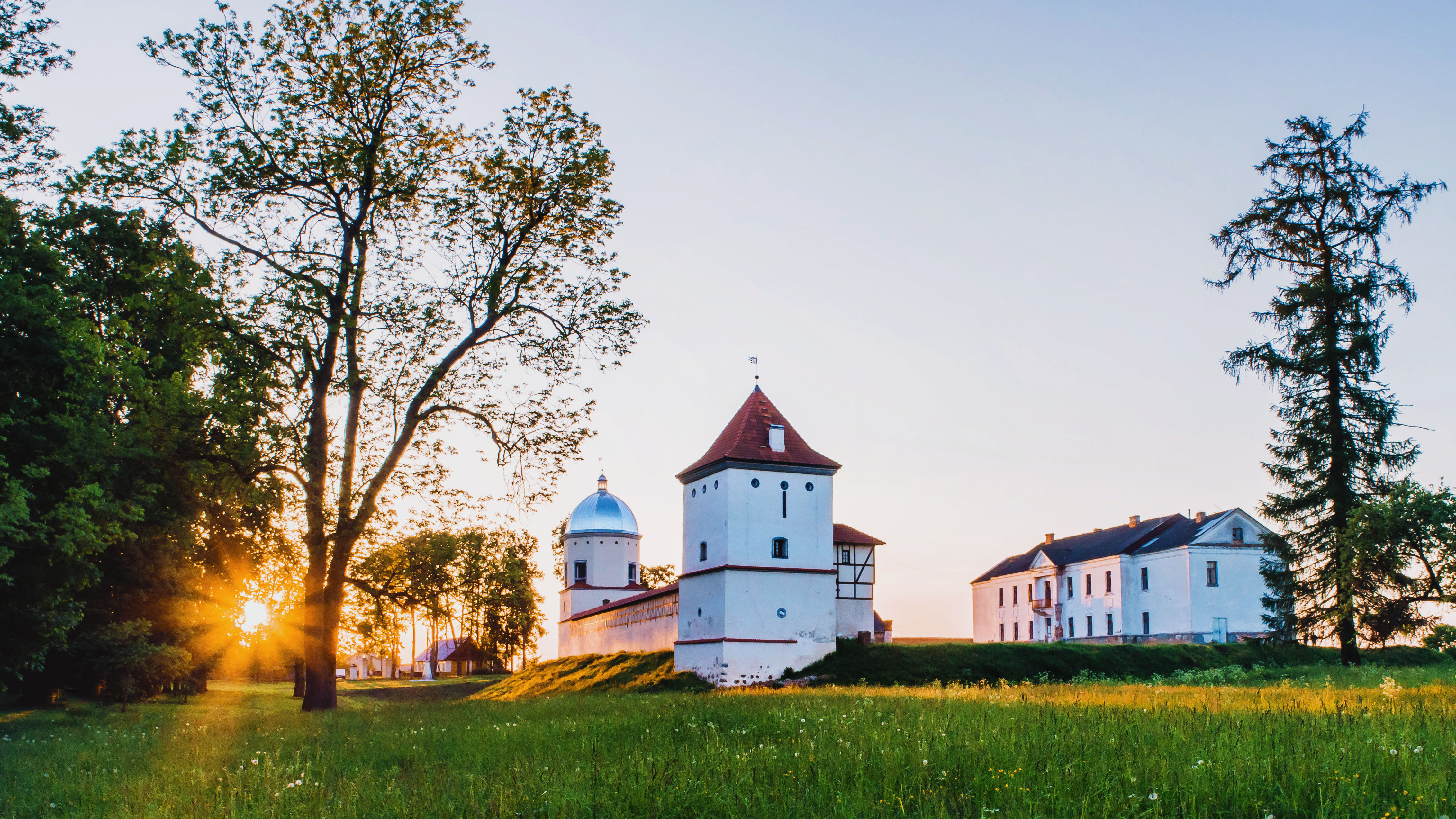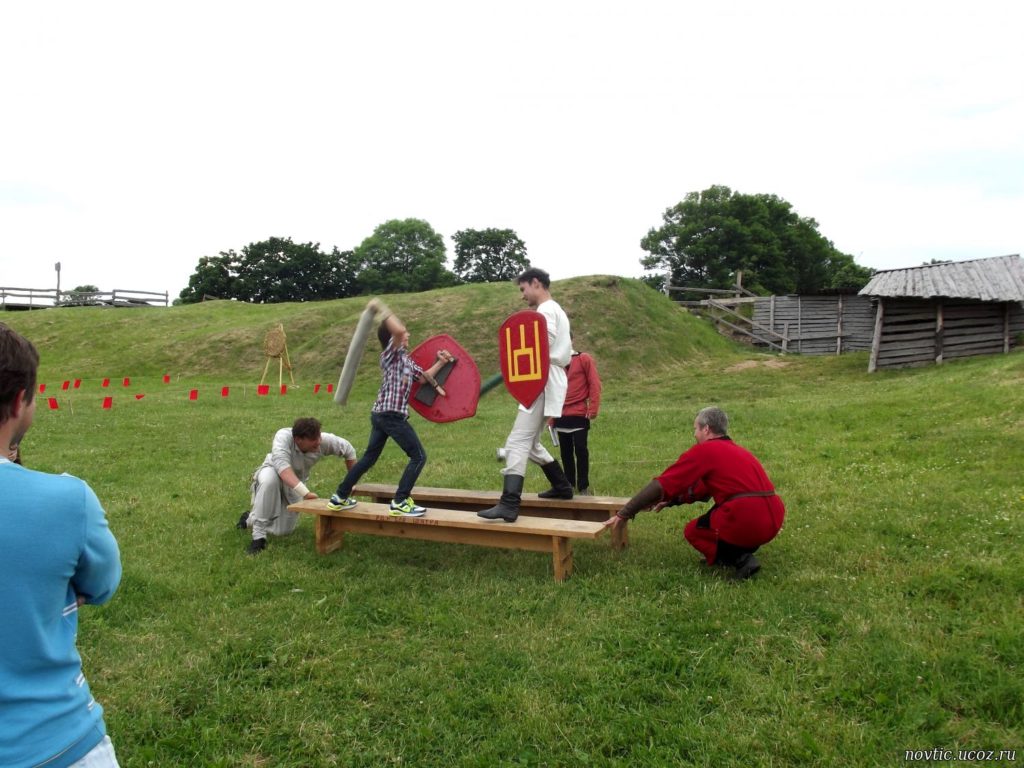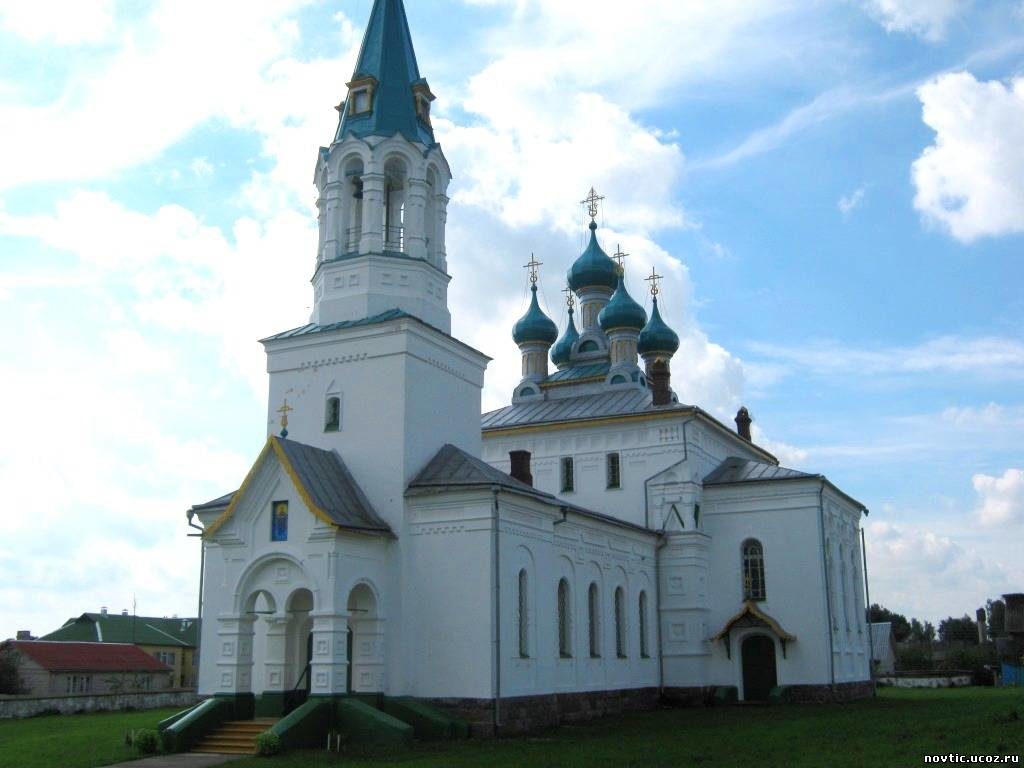Route: Novogrudok (visit the art gallery of K. Kachan, A. Mickiewicz House-Museum, Farny Church, Castle ruins (animation)) – Lake. Litovka (theatrical performance) – Vsevolub village (O.Rurkov manor house, Catholic church of St. Casimir) – Vereskovo village (Brachocki manor) – g.p. Lyubcha (Lyubchany Castle) – Shchorsy village (Khreptovichi Manor)
Length: 85 km.
Duration: 8 hours
NOVOGRUDOK
Visit to the picture gallery of K. Kachan, A. Mickiewicz House Museum, Farny Church
On the territory of the castle participated in the animated performance “Shield and Sword”
OZ. LITHUANIAN
Theatrical performance “On the Land of the Legendary Litvinka”
VSELUB
The beloved can not not be liked. Already on the outskirts of the village you can see a church built in the 15th century. and is considered the oldest preserved Catholic stone church in Belarus. In the beginning, he bore the name of St. Andrew – apparently, in honor of the founder, the Kiev governor and the owner of Vselub Andrey Neverovich. In 1576, the temple was converted into a Calvinistic collection, and in 1642 it was returned to Catholics. Since that time the church is known under the name of St. Casimir’s temple. This monument of Gothic architecture has no analogues not only in Belarus, but also in Lithuania and Latvia. Known only one temple of this style – in Estonia. Under Soviet power, the church was burnt, and only in the early 1990s was restored by the efforts of local Catholics.
In Vse liub there is a large park founded in the 18th century, an Orthodox church, a chapel, the tomb of the family of Count O’Rourke, the last owner of the estate. The park covers an area of 11 hectares, consists of a landscape and a regular part. You can walk along beautiful alleys and glades, relax on the shore of an artificial lake.
VERESKOVO
Vereskovo has an ancient history. Only one detail – here archaeologists have discovered Roman coins! They are now in the archaeological museum in Warsaw. Historians believe that the coins came here during the time when one of the “amber ways” from the Roman Empire operated to the Baltics along the Dnieper and the Neman. At the beginning of the XVI century. the estate of Vereskovo was owned by a representative of the ancient Lithuanian family Wenceslas Nemira, who gave it to his daughter Anastasia – the wife of the Polotsk voivode Nikolai Stanislavovich Glebovich.
In the XIX century. Vereskovo belonged to the president of the town Novogrudok court Tomasz Dybowski. In the middle of the XIX century. The estate was owned by Novogrudok marshal Vladislav Brohodsky. During the uprising of 1863 – 1864 years. The Verkovskaya Court turned into a shelter for insurgents and a warehouse of food supplies. When Vladislav was exiled to Siberia, Helena’s wife followed him. In the 30 years of the XX century. here was built the People’s House.
LUBCHA

Lubchansky Castle is one of the last monuments of traditional castle building in Belarus. Its construction began in 1581, and finished in the beginning of the XVII century. The walls of the castle were erected on the high bank of the Neman. On three sides he was surrounded by a moat width of up to 30 m, and depth up to 7-10 m. Massive three-tiered towers are similar to the towers of the Mir Castle. There was a wooden palace on the castle, and later a stone palace.
Since 1574г. Liubcha belonged to Jan Kishka, a Protestant believer who founded the Protestant cathedral here. After the death of Y. Kishka, the possessions were transferred to the Radziwills. The cathedral became Calvinist, with it in the first half of the XVII century, operated the largest printing house in Belarus, which published about 100 publications. In these editions, new forms of design were used, incl. engraving on copper.
Now Lyubcha is an urban village, although several decades since 1939 it was the center of the Lyubchany district. There is a polyclinic, a precinct hospital, a cinema, industrial enterprises. Nearby there is the river Nyoman.
In the middle school you can visit an interesting museum – the Folk History and Local Lore Museum of the Lubčany Region.
SCORES
Shchors are known as the former possession of the Khreptovichi. Here the subchancler of the DGL Count Iochim Litavor Chreptovich in 1770-1776. built a stone palace on the project of Italian architects J.Sakko and K.Spampani, which became the center of the whole manor and park ensemble. Later the wing was added. Around the palace complex there is a landscape park of approx. 40 hectares with a system of artificial lakes. In the estate was located the richest library, which numbered in the middle of the 20th century. OK. 20 thousand books in different languages, ancient manuscripts, geographical maps. Archive. Here in due time well-known scientists and writers worked: I.Lelevel, I.Danilovich, M.Pochobut-Adlyanitsky, A.Mickiewicz, J.Cechet, V.Syrokomlya.
In 1914 the part of the library heirs I. Khreptovicha was transferred to the Kiev University, much burned into the First World War. In this war, the central and eastern buildings of the palace were seriously destroyed and by now only the foundations have remained of them. The building of the library was preserved. At the end of the XX century. At the entrance to the estate, industrial enterprises and economic buildings were built. In Shchors there is an Orthodox Dmitrievsky church.
Guides: +37529 57 01 476 Kazak Sergey Vladimirovich
+37529 58 29 036 Radyuk Lyudmila Ivanovna
Animation show “Shield and Sword”
Theatrical performance “On the Land of the Legendary Litvinka”
+37533 65 36 720 Natalia Zhishko (Head of the Culture Sector of the Department of Ideology, Culture and Youth Affairs)
Kachan Art Gallery
+37529 34 60 323; +37529 67 69 038







